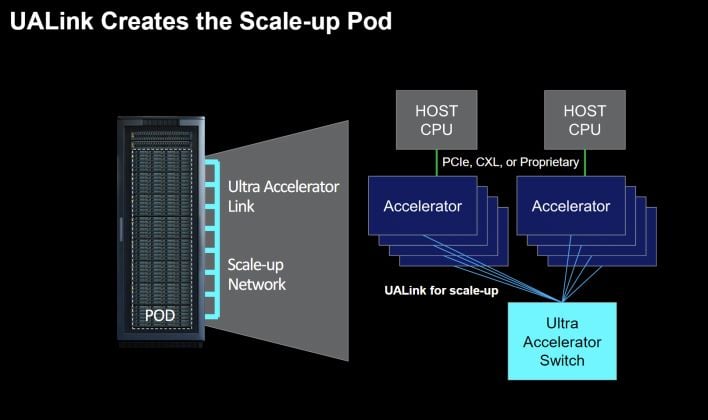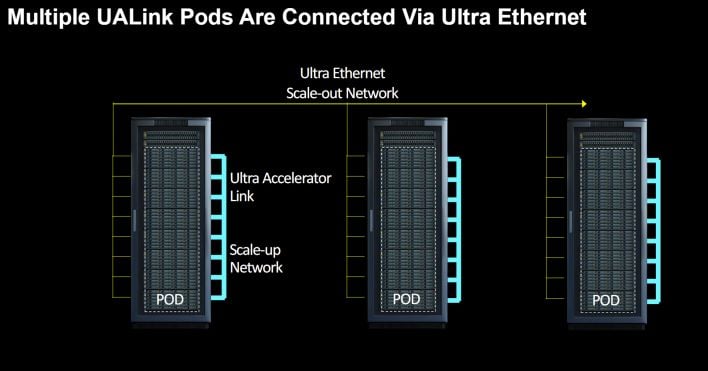Tech Heavyweights Join Forces On Open UALink Interconnect For Next-Gen AI Accelerators
The new UALink (Ultra Accelerator Link) is essentially a high-performance, low-latency communications interconnect for linking AI accelerators, akin to NVIDIA’s NVLink technology. NVLink not only allows NVIDIA to interconnect its GPUs together within a system, but to also link many systems together via its NVSwitch devices for massive scale-up installations, like DGX SuperPODS, etc. One of the goals for UALink is to provide and open, standard alternative technology, to enable similar capabilities across the industry and facilitate integration for OEMs, IT professionals, and system integrators.
The UALink Promoter Group -- comprised of the companies mentioned above -- will define and establish the initial UALink technical specifications. We’re told the 1.0 specification, which is nearly finalized and expected to be available in Q3 of this year, will enable the connection of up to 1,024 AI accelerators within a pod, with the ability for direct loads and stores between the memory attached to the individual accelerators. UALink will be used to link AI accelerators / GPUs on single PCB, accelerators across multiple PCBs, and accelerators across systems to create pods. To scale-out UALink-enbaled pods further, Ultra Ethernet will come into play.
UALink will leverage AMD’s Infinity fabric protocol, and use the highest bandwidth SerDes. We’re told designs will ultimately be optimized for silicon area and power efficiency, but we don’t expect UALink to arrive in actual products until later next year or 2026 at the earliest. The 1.0 spec won’t be released until next quarter, and designs for next-gen GPUs, AI accelerators, and switching technology are already well underway, so it's unlikely they will feature UALink. The need for this type of open industry standard, however, is widely understood and considering the scale and influence of the companies involved right out of the gate, it’s a safe bet UALink will arrive in-market as quickly as possible.




